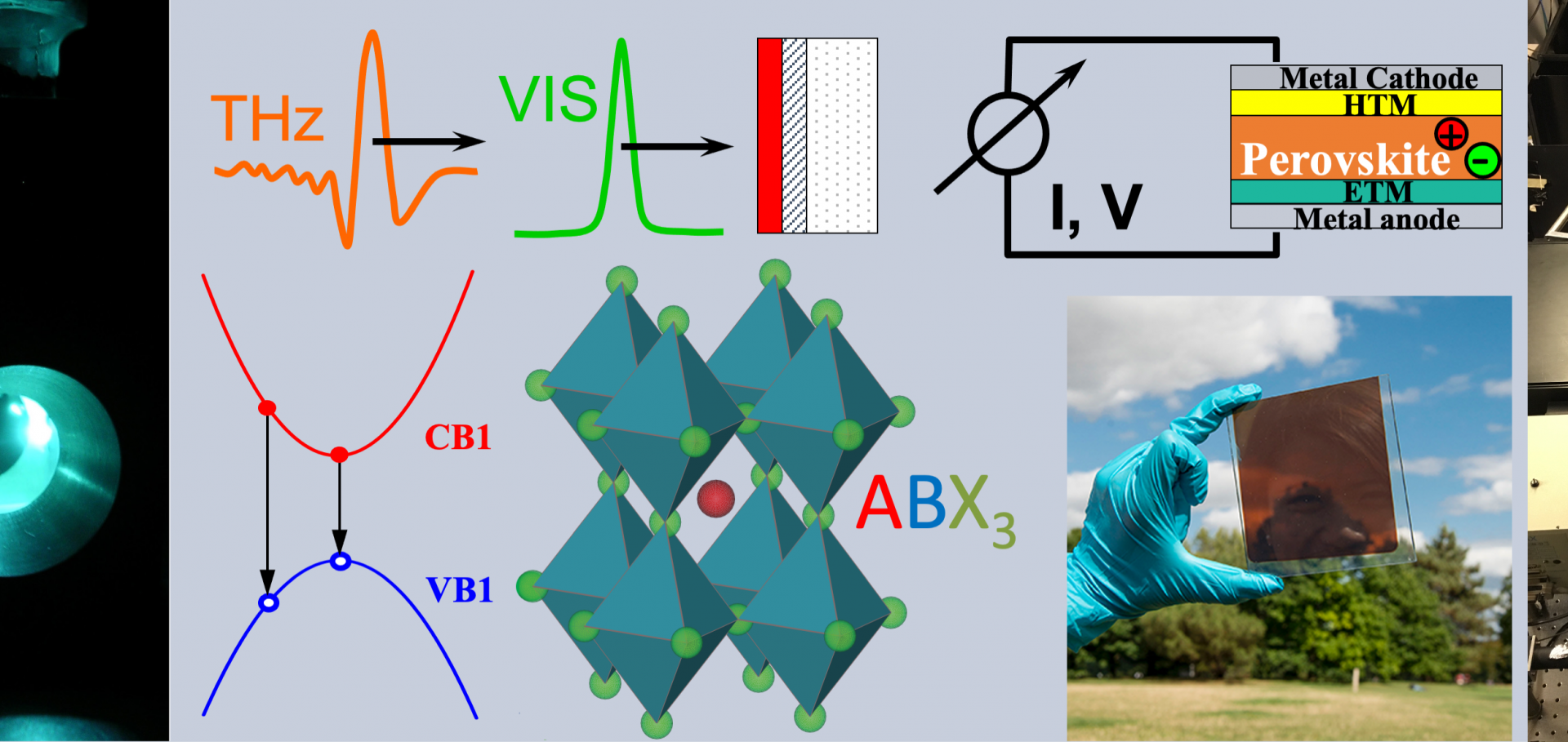Rapid energy transfer enabling control of emission polarization in perylene nisimide donor-acceptor triads
Journal of Physical Chemistry Letters American Chemical Society 6:7 (2015) 1170-1176
Abstract:
Materials showing rapid intramolecular energy transfer and polarization switching are of interest for both their fundamental photophysics and potential for use in real-world applications. Here, we report two donor-acceptor-donor triad dyes based on perylene-bisimide subunits, with the long axis of the donors arranged either parallel or perpendicular to that of the central acceptor. We observe rapid energy transfer (<2 ps) and effective polarization control in both dye molecules in solution. A distributed-dipole Förster model predicts the excitation energy transfer rate for the linearly arranged triad but severely underestimates it for the orthogonal case. We show that the rapid energy transfer arises from a combination of through-bond coupling and through-space transfer between donor and acceptor units. As they allow energy cascading to an excited state with controllable polarization, these triad dyes show high potential for use in luminescent solar concentrator devices.Modulation doping of GaAs/AlGaAs core-shell nanowires with effective defect passivation and high electron mobility
Nano letters American Chemical Society 15:2 (2015) 1336-1342
Abstract:
Reliable doping is required to realize many devices based on semiconductor nanowires. Group III-V nanowires show great promise as elements of high-speed optoelectronic devices, but for such applications it is important that the electron mobility is not compromised by the inclusion of dopants. Here we show that GaAs nanowires can be n-type doped with negligible loss of electron mobility. Molecular beam epitaxy was used to fabricate modulation-doped GaAs nanowires with Al0.33Ga0.67As shells that contained a layer of Si dopants. We identify the presence of the doped layer from a high-angle annular dark field scanning electron microscopy cross-section image. The doping density, carrier mobility, and charge carrier lifetimes of these n-type nanowires and nominally undoped reference samples were determined using the noncontact method of optical pump terahertz probe spectroscopy. An n-type extrinsic carrier concentration of 1.10 ± 0.06 × 10(16) cm(-3) was extracted, demonstrating the effectiveness of modulation doping in GaAs nanowires. The room-temperature electron mobility was also found to be high at 2200 ± 300 cm(2) V(-1) s(-1) and importantly minimal degradation was observed compared with undoped reference nanowires at similar electron densities. In addition, modulation doping significantly enhanced the room-temperature photoconductivity and photoluminescence lifetimes to 3.9 ± 0.3 and 2.4 ± 0.1 ns respectively, revealing that modulation doping can passivate interfacial trap states.Charge selective contacts, mobile ions and anomalous hysteresis in organic-inorganic perovskite solar cells
Materials Horizons Royal Society of Chemistry 2:3 (2015) 315-322
Abstract:
High-efficiency perovskite solar cells typically employ an organic–inorganic metal halide perovskite material as light absorber and charge transporter, sandwiched between a p-type electron-blocking organic hole-transporting layer and an n-type hole-blocking electron collection titania compact layer. Some device configurations also include a thin mesoporous layer of TiO2 or Al2O3 which is infiltrated and capped with the perovskite absorber. Herein, we demonstrate that it is possible to fabricate planar and mesoporous perovskite solar cells devoid of an electron selective hole-blocking titania compact layer, which momentarily exhibit power conversion efficiencies (PCEs) of over 13%. This performance is however not sustained and is related to the previously observed anomalous hysteresis in perovskite solar cells. The “compact layer-free” meso-superstructured perovskite devices yield a stabilised PCE of only 2.7% while the compact layer-free planar heterojunction devices display no measurable steady state power output when devoid of an electron selective contact. In contrast, devices including the titania compact layer exhibit stabilised efficiency close to that derived from the current voltage measurements. We propose that under forward bias the perovskite diode becomes polarised, providing a beneficial field, allowing accumulation of positive and negative space charge near the contacts, which enables more efficient charge extraction. This provides the required built-in potential and selective charge extraction at each contact to temporarily enable efficient operation of the perovskite solar cells even in the absence of charge selective n- and p-type contact layers. The polarisation of the material is consistent with long range migration and accumulation of ionic species within the perovskite to the regions near the contacts. When the external field is reduced under working conditions, the ions can slowly diffuse away from the contacts redistributing throughout the film, reducing the field asymmetry and the effectiveness of the operation of the solar cells. We note that in light of recent publications showing high efficiency in devices devoid of charge selective contacts, this work reaffirms the absolute necessity to measure and report the stabilised power output under load when characterizing perovskite solar cells.Structure-directed exciton dynamics in templated molecular nanorings
journal of physical chemistry. C, Nanomaterials and interfaces American Chemical Society 119:11 (2015) 6414-6420
Abstract:
Conjugated polymers with cyclic structures are interesting because their symmetry leads to unique electronic properties. Recent advances in Vernier templating now allow large shape-persistent fully conjugated porphyrin nanorings to be synthesized, exhibiting unique electronic properties. We examine the impact of different conformations on exciton delocalization and emission depolarization in a range of different porphyrin nanoring topologies with comparable spatial extent. Low photoluminescence anisotropy values are found to occur within the first few hundred femtoseconds after pulsed excitation, suggesting ultrafast delocalization of excitons across the nanoring structures. Molecular dynamics simulations show that further polarization memory loss is caused by out-of-plane distortions associated with twisting and bending of the templated nanoring topologies.Ultrafast delocalization of excitation in synthetic light-harvesting nanorings
Chemical Science Royal Society of Chemistry 6:1 (2015) 181-189


